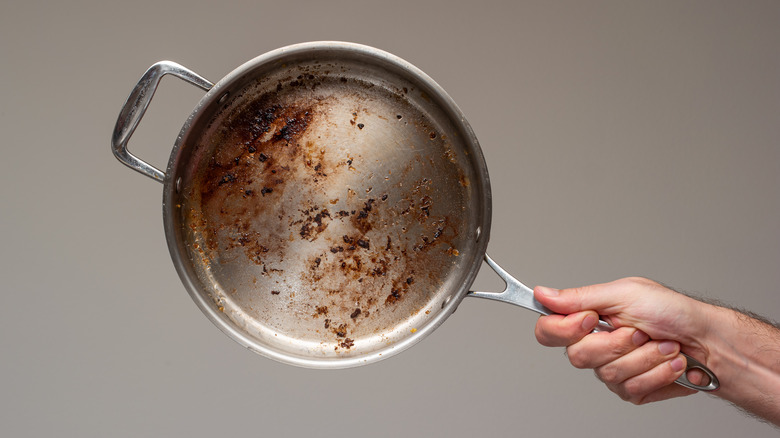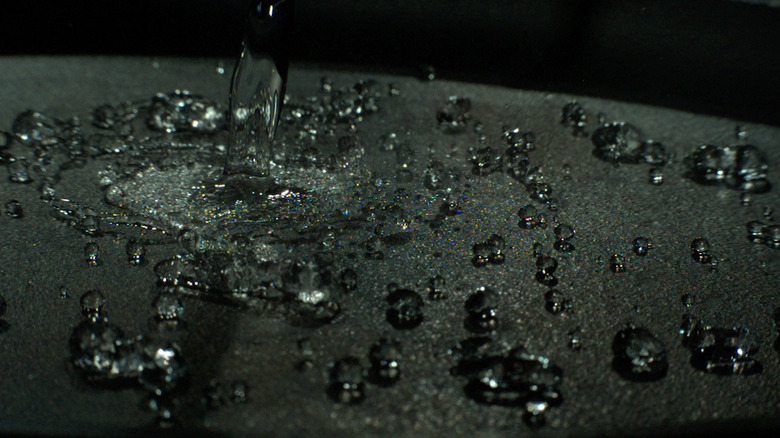The Scientific Hack To Make Stainless Steel Pans Non-Stick
At its core, cooking is experimental, explorative, and expressive. For home cooks and Michelin chefs alike, preparing a meal is like painting a masterpiece. In a kitchen, vegetables, proteins, fats, and acids are the paint and your kitchen tools are the paintbrush. The kitchen itself is a sanctuary where anyone can transform basic ingredients into a feast made for royalty. But in order to maintain the sacred essence of a kitchen, you need reliable kitchen appliances.
One of the most important tools in a kitchen is your pan. Whether you're searing a steak or frying up falafel, many great dishes hinge on the capabilities of your stove-top pan. While a non-stick pan is a go-to option for some, others prefer stainless steel cookware. According to Food Network, non-stick pans can quickly wear and tear due to the non-stick material reacting with the natural acid in food. Additionally, the FDA recently reported that PFAS (per- and polyfluoroalkyl substances) in many non-stick pans are linked to a variety of diseases and chronic illnesses (per Cooking Light).
Whether you're avoiding PFAS or looking for a longer-lasting pan, stainless steel is a great alternative to non-stick pans. Unfortunately, stainless steel cookware is infamous for leaving food residue behind that can be a real pain to clean. However, there's one hack that will keep your stainless steel cookware smooth and stick-free.
Employ the Leidenfrost effect for a non-stick stainless steel experience
The Leidenfrost method is all about temperature testing. All you need for this simple experiment is your non-stick pan and a drop of water. Before starting, the first thing you need to know is that you should always heat up your stainless steel pan before you start cooking if you want a stick-free experience. According to Popular Science, stainless steel cookware has small pores that shrink when heated, leading to a far less sticky pan. Getting the temperature perfect, though, is where the Leidenfrost method comes in.
Start by pre-heating your stainless steel pan as you typically would. Then, place a small drop of water in the pan. If the droplet of water rolls around as it would on a water-resistant sweater, then you can start the cooking process and enjoy a stick-free stainless steel pan. According to Phys Org, the Leidenfrost effect works because the water reacts with a heated surface at a specific temperature to create a small gap between the water and the pan. This rule applies to food the same way it does water by creating a small gap between the pan and the ingredients, allowing your food to literally cook while not actually making contact with the pan. Simply adjust your pan's heat until the drop of water rolls around like a tiny ball and enjoy a hassle-free cooking experience that will keep your kitchen sanctuary tools free from residue.
Sayonara, sticky stainless steel!

